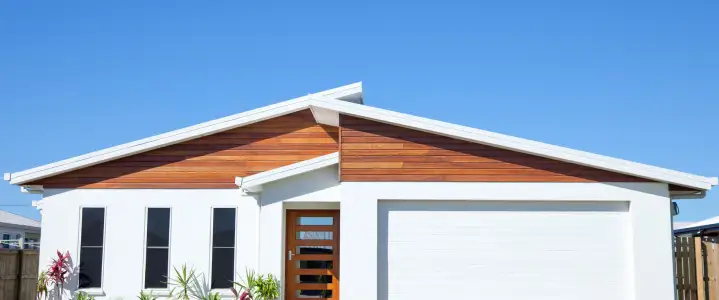Understanding mortgage protection insurance
A mortgage comes with a laundry list of insurance policies to consider, so let’s examine exactly what mortgage protection is and what it can do for you. If you’re feeling a little lost in the mortgage world, dip a toe into our beginner's guide to loan basics.
Definition and purpose
What is mortgage protection insurance (MPI)? MPI is a type of policy designed to help with the mortgage payments if you pass away, become disabled or lose your job. Think of it as mortgage payment protection, providing peace of mind as a homeowner and financial security for your family if the unexpected happens.
Who does it benefit?
You: If you become disabled or lose your job, MPI can help cover your mortgage payments, providing financial security during tough times.
Your family: MPI helps pay the mortgage if you pass away, allowing your family to stay in your home without additional financial burdens.
How it differs from other insurance types
From homeowners insurance to title insurance, it’s easy to mix up the different types of financial protection—especially when MPI is sometimes called“life insurance for mortgages.” Let’s clear things up by taking a closer look at three often confused types: MPI, private mortgage insurance (PMI) and life insurance.
| Insurance type | Is it required? | How does it work? |
|---|---|---|
| Mortgage protection insurance (MPI) | No, voluntary insurance to protect homeowner and loved ones | Helps with mortgage payments if homeowner dies, becomes disabled or loses employment |
| Private mortgage insurance (PMI) | Yes, typically required to protect lenders if down payment is less than 20% | Protects the lender if homeowner defaults on the mortgage |
| Life insurance | No, voluntary insurance to protect loved ones | Pays a lump sum to beneficiaries that can be used for anything, including the mortgage |
Types of mortgage protection insurance
Let’s break it down even further into the two distinct types of MPI, which differ in structure and cost.
Level-term insurance
This option provides a fixed amount of coverage for a specified period, typically the length of your mortgage. The premium remains steady throughout the term, making household budgeting easier. If you want consistent coverage and predictable costs, level-term insurance might be for you.
Decreasing-term insurance
This type of MPI offers coverage that decreases over time, usually in lockstep with your mortgage balance. The premium stays the same, but the coverage amount decreases as you pay down your mortgage. This type of policy can cost less than level-term insurance and is a good fit for those who want mortgage support if they pass away.
Benefits of mortgage protection insurance
Let’s dive deeper into how home loan protection helps you and the people you love.
Financial security for your family
If you pass away, mortgage protection helps your loved ones cover the mortgage bills, which takes at least one burden off their shoulders. Even when you aren’t around, MPI can ensure your home remains a safe, stable environment for your loved ones.
Peace of mind for homeowners
You have enough to worry about on a daily basis; knowing you have mortgage security insurance can reduce your stress and anxiety. It provides a sense of security, allowing you to focus on your family and your financial health without fixating on the “what ifs.”
Costs associated with mortgage protection insurance
Home loan insurance isn’t one-size-fits-all. Several factors will determine your premium price tag.
Factors influencing premiums
- Age and health: Younger folks in good health tend to pay lower premiums.
- Coverage amount: The bigger the mortgage, the higher the premium.
- Policy term: Longer policy terms typically mean higher premiums.
- Type of policy: Level-term insurance usually has higher premiums than decreasing-term insurance.


Average cost estimates in action
On average, you can expect to pay between $20 and $50 per month on a policy that covers a $200,000 mortgage.
How to choose the right policy
As always, the policy you choose depends on your personal needs and financial circumstances.
Assessing your financial situation
Take a look at your income, expenses and current insurance policies. Next, determine how much coverage you need and whether a level-term or decreasing-term is the better choice for you. Consulting a financial advisor can help you make the most informed decision.
Comparing different providers
- Research providers: Look for reputable insurance companies with solid reviews.
- Compare quotes: Get quotes from multiple providers to find the best rate.
- Read the fine print: Familiarize yourself with the terms and conditions of the policy, including any exclusions or limitations.
Common myths and misconceptions
Let’s clear up common points of confusion.
Mortgage protection vs. private mortgage insurance (PMI)
Mortgage insurance vs. MPI is a common topic in the home loan arena. To recap, mortgage protection insurance is optional coverage that helps with mortgage payments in the face of death, disability or unemployment. In contrast, private mortgage insurance can be required by lenders if you put down less than 20%, and it only protects the lender (not homeowners) if you default.
Necessity for all homeowners
Some people believe that MPI is necessary only for those with young families or high-risk jobs. The truth is, MPI is a good idea for any homeowner who wants mortgage support in the event of unforeseen financial hardships. It helps protect your peace of mind and the people you love.







